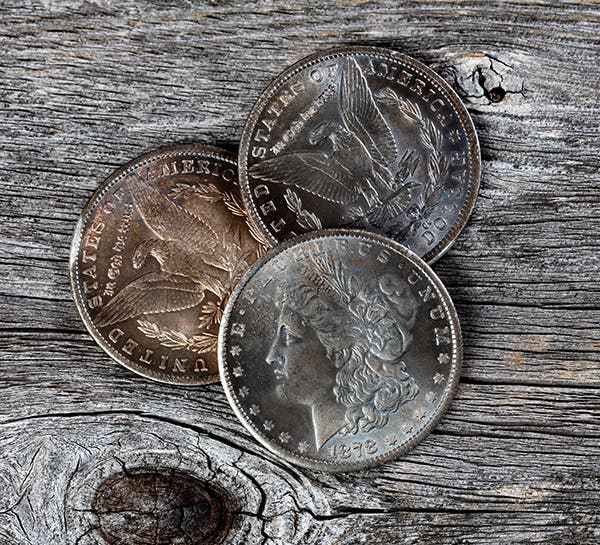Nickel find a genuine double strike
Is this nickel a legitimate Mint product? All indications are that it is indeed a Mint product, double struck, once in the collar and the second time offset toward 6 o’clock.
Is this nickel a legitimate Mint product?
All indications are that it is indeed a Mint product, double struck, once in the collar and the second time offset toward 6 o’clock.
Didn’t the U.S. government institute gold restrictions before the famous 1933 date?
One that escapes many historians is the curtailment of gold coin production and of payments in gold in 1917, during World War I. The government feared that otherwise our gold reserves would be depleted by the war, leaving nothing to back our paper money. As it turned out, we did such a brisk war material business with the Allies that gold reserves by the end of the war had reached the $3 billion mark, and in the next several years added another $1.25 billion.
Why were so many gold coins struck in the U.S. between 1922 and 1928?
Rather curiously, it had nothing to do with any demand or need for gold coins in this country. The demand instead came from other countries of the world. The U.S. currency was one of the strongest in the world following World War I, so even the Germans wanted U.S. gold to back their currency. Collectors can be thankful that they did because the bulk of the U.S. gold coinage was in foreign bank vaults when President Roosevelt prohibited private gold ownership in 1933. Once the ban was lifted, the gold came back to the U.S.
I understand that the down payment for the Panama Canal was made in silver dollars. How many were involved?
You have about half the story. In 1904 the U.S. government made the down payment on the Panama Canal, paying out $10 million, but only half of that was silver dollars. Even so, this was a significant drain on the stocks of silver dollars, and it is uncertain if very many of them found their way back to the States. The result of the transaction was that the silver coins became the backbone of the Panama economy for many years afterward. This may be part of the explanation of why there are so few uncirculated 1903 and 1904 dollars.
Like what you're reading? Subscribe to our FREE email newsletter![form id="27827"]
Is there any record of the first Morgan dollar, struck in 1878?
The coin was located in the Rutherford B. Hayes Library and Museum in Freemont, Ohio. Silver dollar experts Leroy Van Allen and Pete Bishal found the Certificate in 1980 in the Library files among correspondence from Chief Coiner O.C. Bosbyshell, indicating the coin had been struck March 11, 1878.
We know of attempts to get the turkey on our coins by Ben Franklin, but wasn’t there a duel fought over a proposal to put a goose on the first dollar?
A challenge, but no duel. Congressman Mathew Lyon opposed putting the eagle on the coin, and in response Judge Thatcher proposed the goose, commenting that “the goslings would fit on the dime.” The resulting laughter angered Lyon, who issued the challenge, but Thatcher refused it, saying Lyon knew he was a coward or he wouldn’t have offered to fight. The two made up and became good friends, but the eagle won.
What country has used the most different dating systems?
A quick check seems to give India that distinction. Besides several major systems, a number of minor regional, state and even local systems have been, or are still used.
More Coin Collecting Resources:
• Subscribe to our Coin Price Guide, buy Coin Books & Coin Folders and join the NumisMaster VIP Program








